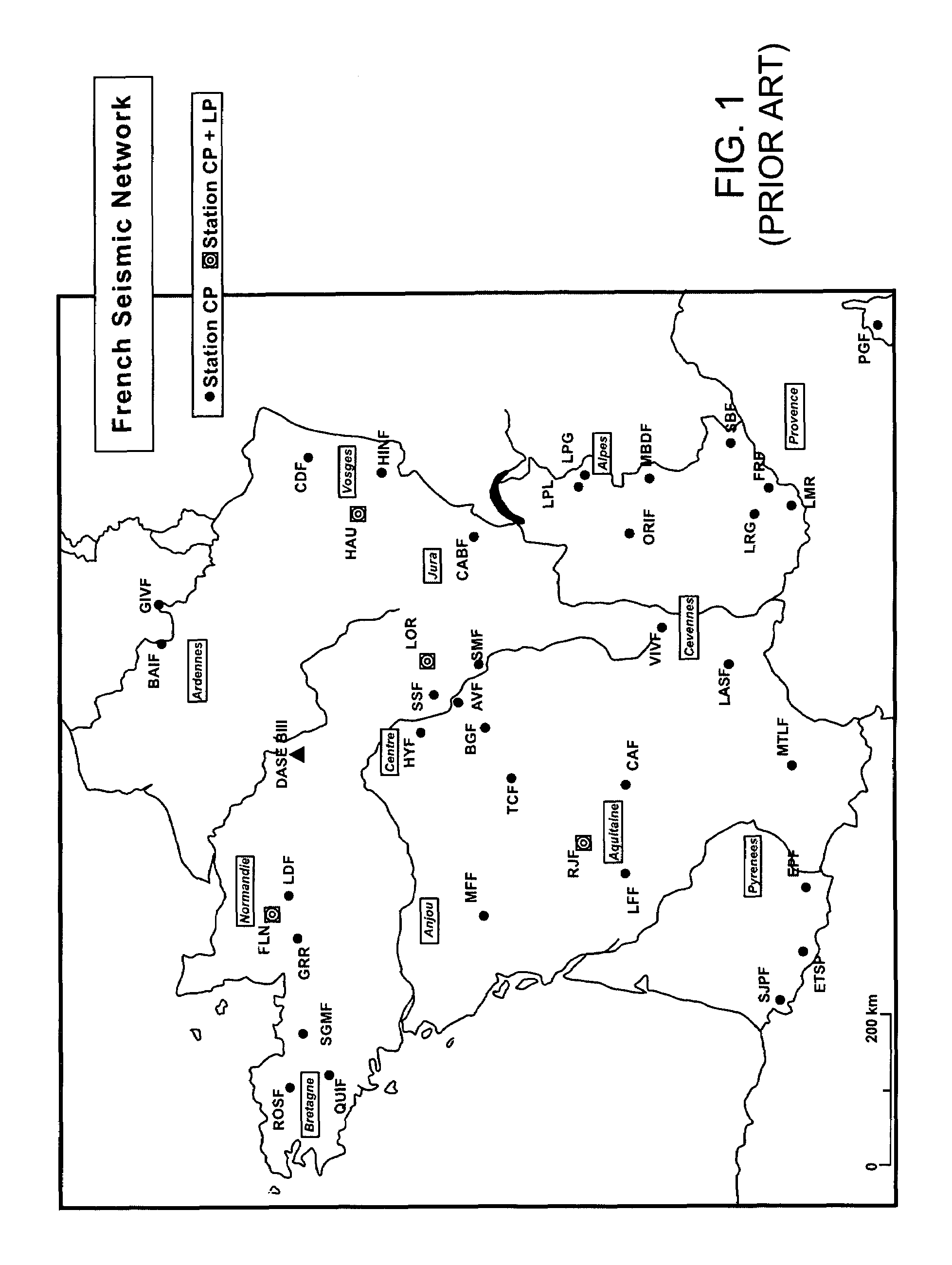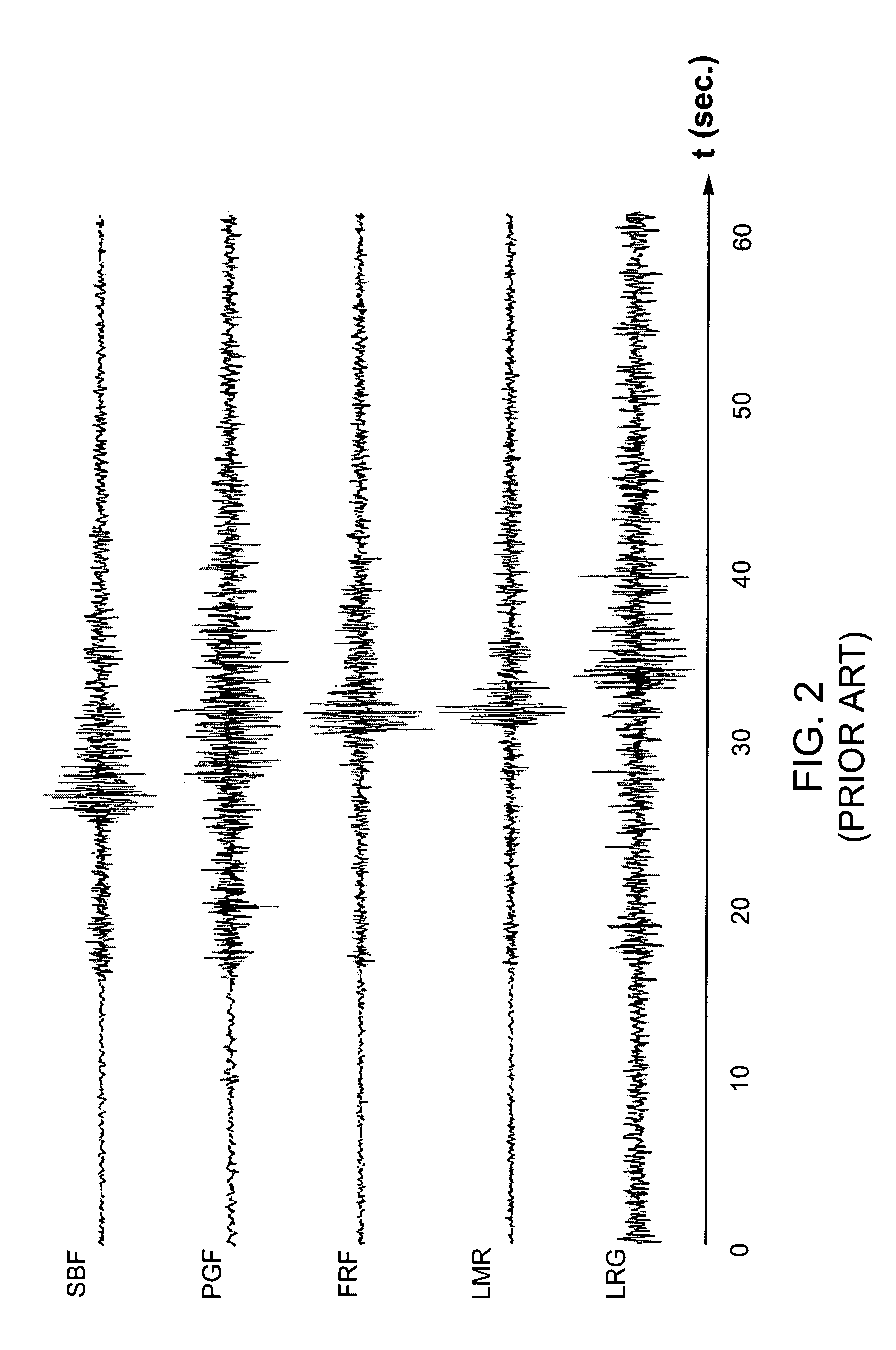Artificial intelligence systems for classifying events, objects and situations
a technology of artificial intelligence and object classification, applied in the field of artificial intelligence system for the classification of events, objects or situations, can solve the problems of inability to rigorously evaluate regional events, difficulty in discriminating seismic signals through low level processing alone, and automatic classification of seismic events
- Summary
- Abstract
- Description
- Claims
- Application Information
AI Technical Summary
Benefits of technology
Problems solved by technology
Method used
Image
Examples
Embodiment Construction
[0039]The present invention relates to a system of artificial intelligence for the classification of events, objects or situations from signals and discriminant parameters produced by models, characterised in that it comprises at least one processing branch comprising a fuzzy expert system (FES expert) taking a decision according to high level properties and lower level discriminant parameters extracted from signals by signal processing type procedures, and capable of explaining its decision to the user through the intermediary of rules selected by order of applicability.
[0040]In this fuzzy expert system a gradient decrease is carried out on the parameters:[0041]x=y / σ[0042]s=ln / 2σ2)[0043]r=ln(ρ)[0044]d
with:[0045]y: position of fuzzy sets of premises[0046]σ: width of fuzzy sets of premises[0047]ρ: weight of rules[0048]d: degree of activation of each class for each rule.
[0049]Advantageously the system according to the invention is a multi-expert system constituted of at least two inde...
PUM
 Login to View More
Login to View More Abstract
Description
Claims
Application Information
 Login to View More
Login to View More - R&D
- Intellectual Property
- Life Sciences
- Materials
- Tech Scout
- Unparalleled Data Quality
- Higher Quality Content
- 60% Fewer Hallucinations
Browse by: Latest US Patents, China's latest patents, Technical Efficacy Thesaurus, Application Domain, Technology Topic, Popular Technical Reports.
© 2025 PatSnap. All rights reserved.Legal|Privacy policy|Modern Slavery Act Transparency Statement|Sitemap|About US| Contact US: help@patsnap.com



